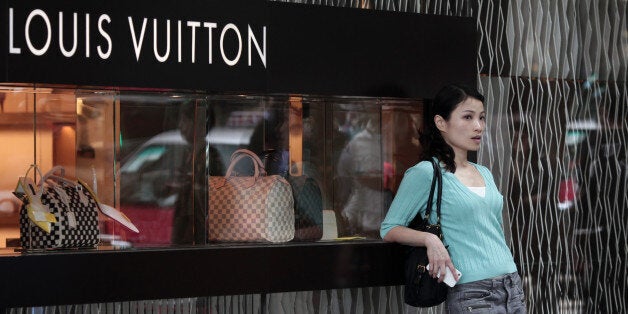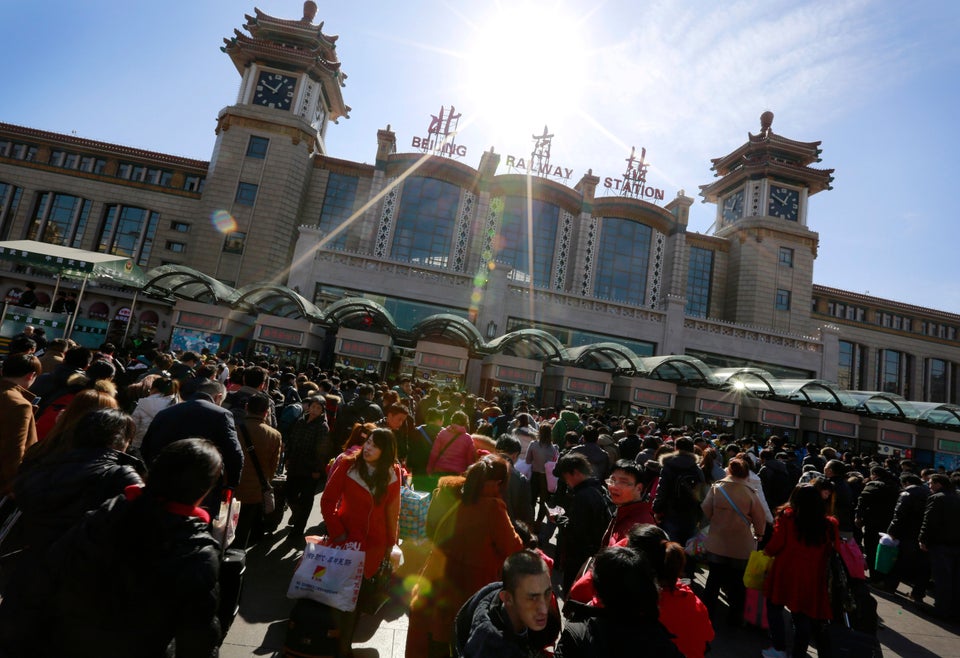
BEIJING -- There are two common themes in recent media that, when paired together, may be leading China watchers toward a flawed forecast. The first is China's transition from a production-driven to a consumption-driven economy. The second is Chinese consumers' undying lust toward luxury.
Together, these two paint a tawdry picture of China's next decade: we can imagine scores of young people walking around with Gucci tattoos on their necks, babies sucking on Marc Jacobs pacifiers, the deceased wrapped in Burberry shrouds.
Or maybe not.
In truth, young Chinese consumers are more and more like their Western millennial counterparts -- they see consumption not as a badge of honor, but a source of value.
According to Tom Doctoroff, cited in Mary Bergstrom's 2012 book on marketing to Chinese youth:
As the Chinese consumer becomes wealthier, his relationship with society evolves. . . The benefit structure has evolved too -- from more blatant status projection to more substance-driven. It's always about substance that shines.
Substance is indeed the right word to describe where China's young wealth are putting their spending money. Leading-edge market research in China Youthology's Post-90s report further shows that China's youth generation is in fact not as enamored of luxury as their predecessors are. According to the report:
[For Chinese youth born in the 1990s,] a life of good quality is not simply about possession of some items. It includes both the material consumption and a growing cultural consumption. More importantly, quality life must be built around personal choices and filled with one's individual traits.
Whereas the recent adult generation (ages 35-50) took price tags as their life-quality index, the upcoming young cohort (20-35) is past money for money's sake. Having grown up in a consumption society, these young people not only see through the shallowness of luxury consumption, but they even view luxury consumers as the true adolescents.
Today's youth are more sophisticated than their predecessors. They've traveled. They've lived away from their parents. They have multiple hobbies and interests. They've blogged and photographed and set up online businesses. They've dated, and they've had their hearts broken. By the age of 24, they've experienced more of the world than their parents ever have or will.
These youth view the world through a kaleidoscope rather than a telescope, seeing new beauty with each turn of the lens. With such a colorful world to witness, one full of diverse experiences and fulfilling challenges, what role does the static beauty of luxury goods play?
Consumption As An Arena Of Choice
Consumption is one of the few areas in which Chinese youth can exercise free will. In a society where free will is a coveted commodity, consumerism has found a faithful following. Consumption offers not just choices of colors and styles, but also values and identity.
Value formation and identity construction are the deepest pursuits of Chinese youth today. Consumerism offers them the opportunity to form identities based on the choices they make. Unlike their predecessors -- even those just 5-10 years older -- youth today associate brand identity with self-identity. It is no longer the ability to purchase a brand that makes you a valuable person; it's your decision of which brand to purchase that imbues you with value.
Whereas purchasers of luxury brands may have been admired among youth 10 years ago, now they are considered shallow or vulgar. Where is their attention -- and money -- going instead?
New Meaning Of Luxury
A recent salon titled "Small Luxuries" and held by China Youthology in Beijing invited local leading-edge consumers to share their preferred methods of consumptive indulgence. These young lecturers shared stories of how they consume to be fulfilled. Examples included:
- Collecting retro postcards from places traveled and mailing them to friends.
- Frequently purchasing new pens and cute stickers to create memorable journal entries.
- Finding uniquely designed plates, bowls and utensils, cooking food to match them and then taking artistic pictures of the meal.
- Using a welding flame to make original jewelry.
These examples of "small luxuries" are far less about price and name, and much closer to DIY and experiential consumption. Take note, however, that this "small luxury" trend is not just DIY or experiential consumption. It is establishing values by consuming products heavy in craftsmanship and sentimental value.
Brands take heed: in order to win over Chinese youth, you must stand for something. Youth crave values, and fancy brand names don't stand for much but exclusivity, elitism, and in the worst case, corruption. In their time of need and self-exploration, how will you guide them?

